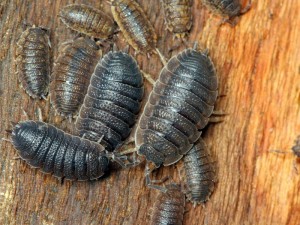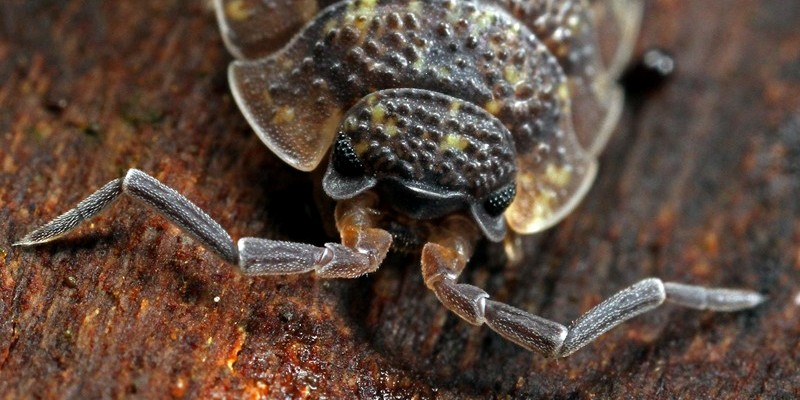Order Isopoda

Believe it or not, slaters and pill bugs are related to crabs and lobsters. They are crustaceans and are one of only two groups of crustaceans that have left the water on a permanent basis, although they still require some moisture to survive. They are primitive creatures that have changed little since life first got a foothold on land.
Slaters have oval-shaped, flattened bodies made up of 14 segments. Pill bugs are more rounded in appearance. They have seven pairs of legs and two pairs of antennae, although one pair of antennae is very reduced and difficult to see. At the end of their abdomens they have a pair of uropods, sensory organs that assist in navigation and are found on other crustaceans. Pill bugs get their name because they roll into a tight ball when they feel threatened, a feat that slaters cannot perform.

Slaters and pill bugs feed on decaying vegetable and animal matter and can be quite beneficial in the garden, helping to return nutrients to the soil.
A female slater retains her eggs in a brood pouch under its body. The young, which resemble the adults but with one less segment and pair of legs, will stay there for a short time after hatching. As they develop, they moult several times, with the missing segment and legs making an appearance closer to adulthood. When moulting, slaters shed in two stages – the first half of their body first, followed by the second half a couple of days later.
Slaters and pill bugs are commonly found in areas where there is plenty of moisture and they can usually be found under logs or in leaf matter.
~~~~~
Click here to see the Slater and Pill Bug photo galleries
~~~~~

Special thanks to Arp Kruithof from the Netherlands for assisting with the identifications.